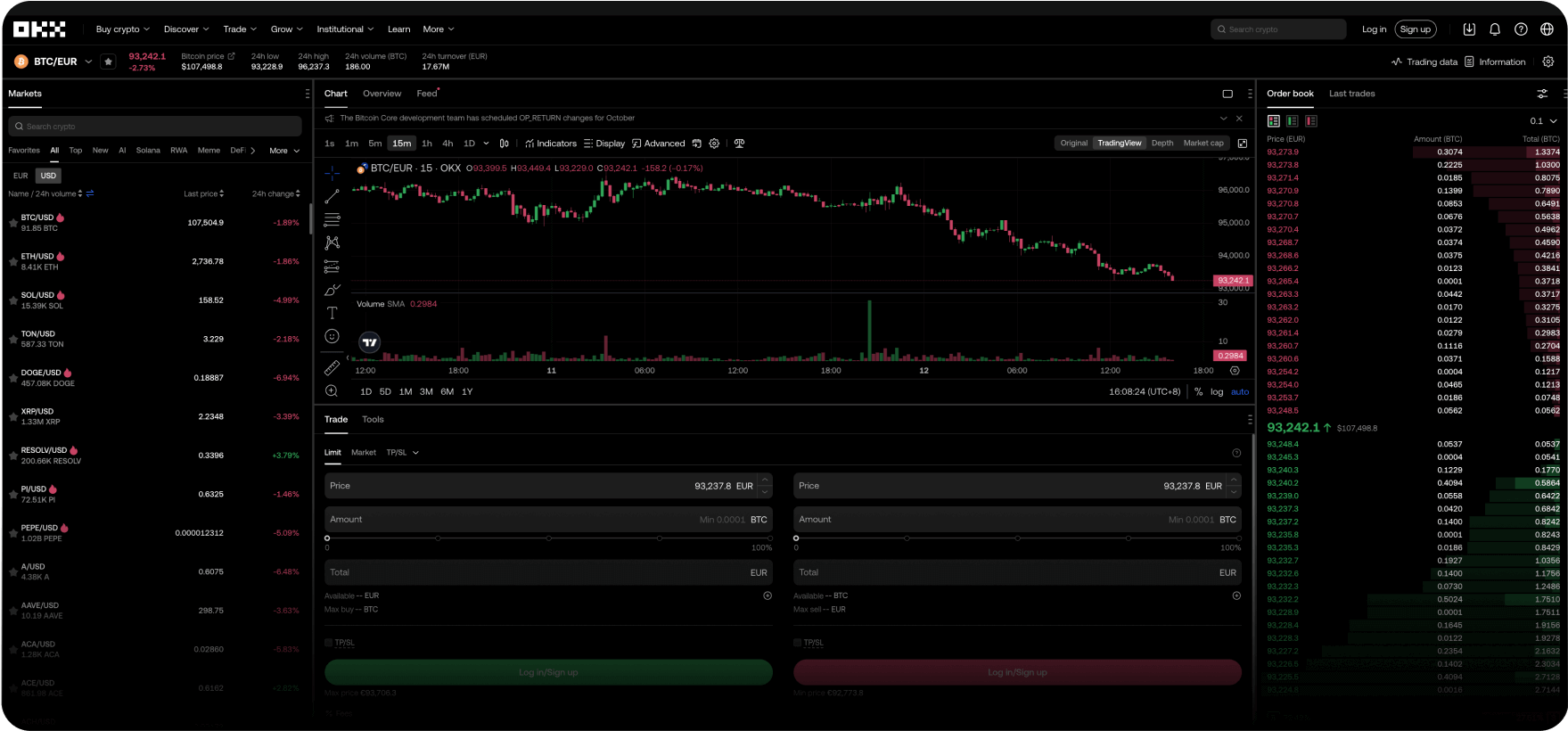Din globale konto i digitale dollar
Få de laveste gebyrene, raske transaksjoner, kraftige API-er og mer.

Med deg hele veien
Fra å foreta din første kryptohandel til å bli en erfaren trader er vi der for å veilede deg gjennom prosessen. Ingen spørsmål er for små. Ingen søvnløse netter. Ha tillit til kryptoen din.
Treneren Pep Guardiola
Forklarer en utrolig fotballstrategi
Omskriv systemet
Velkommen til Web3
Snowboarderen Scotty James
Inviterer hele familien med
Har du spørsmål? Vi har svarene.
Hvilke produkter leverer OKX?
Hvordan kjøper jeg Bitcoin og annen kryptovaluta på OKX?
Hvor holder OKX til?
Kan innbyggere i EU bruke OKX?



